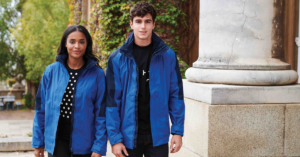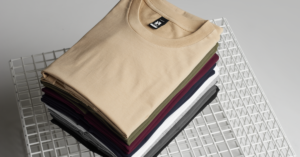We’ve mentioned previously about the growing importance of branding. In clustered industries with many companies hawking similar products, the quality of your brand can often be the main differentiator between you and your competitors. Which is why you can’t afford for it to become limp and lifeless. A rusty, bland brand is a surefire way to cause your company to fall off the map. This is where the art of business rebranding comes into play.
Rebranding can light a fire under an underperforming and stagnant brand. It can revitalise and kick-start your arc to success. However, it does require a reluctant acknowledgement that your brand has atrophied and then the willingness to take practical steps. Here are some of the best rebranding efforts of the modern era to offer inspiration on putting your best foot forward.
OLD SPICE:
Prior to the rebranding effort in 2010, Old Spice was an anachronism. Their aftershave and deodorant were more likely to be found in the musty cabinet of your grandfather then worn by anyone growing up in the post-Cold War era. They were a relic of a bygone period, slowing fading into obscurity. One could argue that their turnaround was stimulated by the 2010 release of their advertising campaign; ‘Smell like a man, man’. The advertisement featured actor Isaiah Mustafa as the ‘man your man could smell like’ and a setting which rapidly changes from bathroom, to yacht and then finally to a horse on the beach. The commercial gains top marks purely for unbridled creativity but it also firmly established the grooming products of Old Spice as being the epitome of masculinity. It went on to achieve virality both online and through word-of-mouth, not least because of the laughs to be had. In Old Spice’s case, they didn’t require a drastic overhaul, instead, they merely needed to repackage their products in line with the 21st century, revamp their website and relaunch an innovative marketing strategy. Their situation was unequivocally helped by Old Spice’s pedigree, with a 70-year history adding an invaluable authenticity and character to the brand.
BURBERRY:
Previously, Burberry had a less-than-glamorous reputation. It had become more associated with chavs and hooliganism than with being a star-studded, boutique clothing line. This was a far cry from it’s fusty Victorian roots when it maintained a reputation for being popular among the landed gentry. At one point, the trademark check was even banned from select pubs in Leicester for it’s association with thuggery and violence. Their issues surface in the early noughties when they extensively licensed their products, which while being a financial boon, resulted in a number of low-brow imitators that tarred the brand’s image.
What Burberry needed was a complete turnaround.
Angela Ahrendts took the helm of the company in 2006 and is credited with positioning it back in high-fashion’s golden glow.
She started by purchasing back all of the licenses which had enabled the brand’s iconography to be plaster on every other piece of streetwear and retuning back the company’s roots. This involved shifting the focus back to the trench coat and its prestigious outerwear. But retreating into the past wasn’t the remedy for their problems, they had to wholeheartedly embrace digital and its various manifestations. They started engaging in social media, live streaming of fashion shows and interaction with consumers. Moreover, they began producing high-quality advertising campaigns which featured British aristocratic settings, models and celebrities. They cannily linked up with Emma Watson and their latest campaign stars Domhall Gleeson, Dominic West and Sienna Miller. Burberry’s new strategy has paid major dividends with the company’s value rising from £2bn in 2008 to over £7bn in 2014.
MCDONALDS:
The universal symbol of fast-food, McDonald’s seems to have an ineradicable association with detrimental conditions like obesity, diabetes and heart attacks. This notoriety has been reinforced by documentaries like Super Size Me, a vomit-inducing take of one man’s quest to eat McDonald’s every day for each meal for an entire month in order to demonstrate the damning health effects of their food. The flagging chain has frequently tried to cast aside its grimy and unhealthy reputation, especially given that the American public is becoming increasingly more health conscious and wary about the origin story of their food. In with kale and blueberry smoothies, out with greasy burgers cascading with juices.
The definitive fast-food company realised they needed to adjust their values from being focused entirely on convenience to diversify into healthier offerings. Subsequently, they started to implement salads, low-fat yoghurts, fruits and egg whites onto their menus. Furthermore, there was an emphasis on their beef being sourced from local farmers with organic, eco-friendly techniques for growing. Finally, they performed an extensive revamp of their restaurants with an emphasis on plushness and comfort. It was a well-rounded attempt to market themselves as an upper-end fast food establishment and there is now a concerted commitment to continually striving to improve the nutritional composition of their food, which can only be advantageous to their cause. Whether McDonald’s can ever permanently shake-off the label of being an unhealthy, fast-food joint remains to be seen, but they are doing their utmost to convince us that they care about the continued functioning of our internal organs.
CVS:
Two years ago, the drugstore CVS made a revolutionary leap forward that defied all precedent in their industry within the United States. They ceased stocking all tobacco and tobacco related products in a move to position themselves as the preeminent American healthcare brand. The manoeuvre has been commended from a number of corners including former First Lady, Michelle Obama, and lit up social media resulting in over 100,000 salutary tweets. Similar to McDonald’s, CVS observed an increasingly health-conscious public in which the glorification of activities such as smoking has given way to aversion, and tapped into this new-found ideology. They also changed their name from the empty CVS Caremark to CVS Health to accentuate this metamorphosis. This new handle affords the company the chance to expand their role in the healthcare industry.
While the decision to remove tobacco products from their inventory seems like a minor one, it is pivotal for any company seeking an amplified role in the healthcare industry due to the widely acknowledged connection between smoking and an array of life-threatening conditions. In addition, they were the first and hitherto only drugstore chain to make the decision which unequivocally bolsters their standing among the public. By making such a gesture, CVS humanised themselves and projected the message they were a company with integrity and vested in the health of their consumers.
HARLEY DAVIDSON
For many, Harley Davidson is the quintessential American motorcycle company. It spearheaded the popularisation of the chopper-style of the vehicle and has a loyal and diehard following that consists of owners clubs and events around the globe. However, its current success belies its turbulent past. The manufacturer has brushed with poor product sales as well as issues of the quality of their bikes. They had also inadvertently gained a seedy reputation of being the bike of choice for infamous biker gangs like the Hell’s Angels in conjunction with a public perception that they were outmoded and anachronistic. Clearly, they needed a shift in direction.
Their 1985 attempt at rebranding was expressed more in resolutely improving the quality of their bikes. Their marketing strategy had always emphasised word-of-mouth spread of their offerings and highly emotive content marketing with a meaningful narrative. They aimed to capture the American ideals of rugged individualism, self-sufficiency and adventurousness. As such, their primary demographic were white American males in their mid-twenties to late-thirties. By refining the quality of their product and offering more accessible pricing, they were able to ward off Japanese competitors and increase their share in this target market.
While this strategy was successful for the era, 2016 poses new problems for the firm. Their shift to digital has not been as forthcoming as one might expect and their average owner is now pushing 50. They need to seek out an innovative approach to amplify their appeal to Millennials and ethnic minorities or risk fading into obsolescence. Given the value of their heritage and their prior success in social and content marketing, we are confident they will find a route.
Wrap up:
So, here are our best examples of business rebranding. Hopefully, the techniques used by these businesses can provide inspiration for your own. There are a few recurrent patterns; tapping into and exploiting cultural trends and ideologies, improving the quality and range of custom products, expressing values with social currency and embracing he digital revolution fearlessly. Injecting a safe dose of humour never hurts as well!





